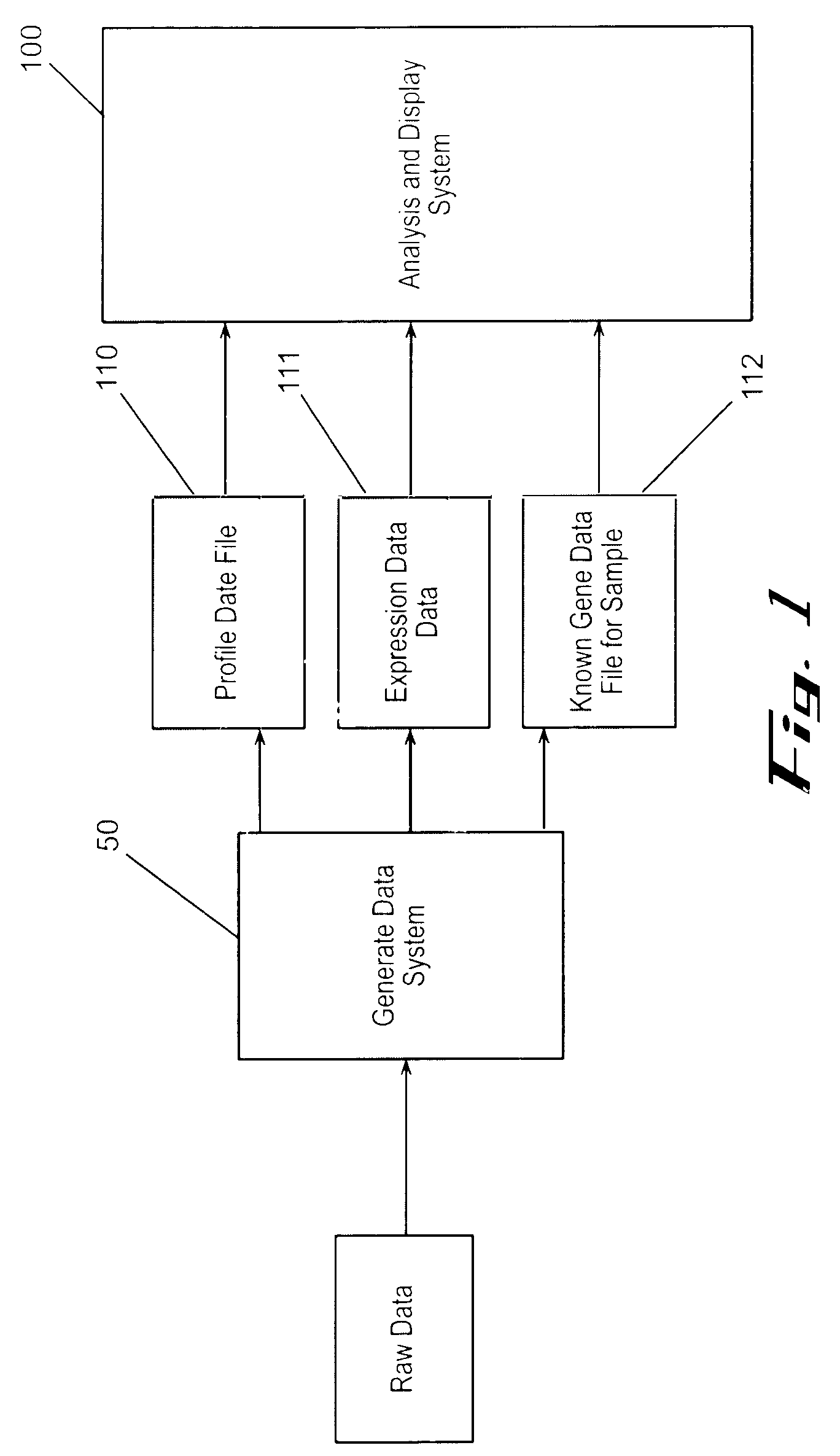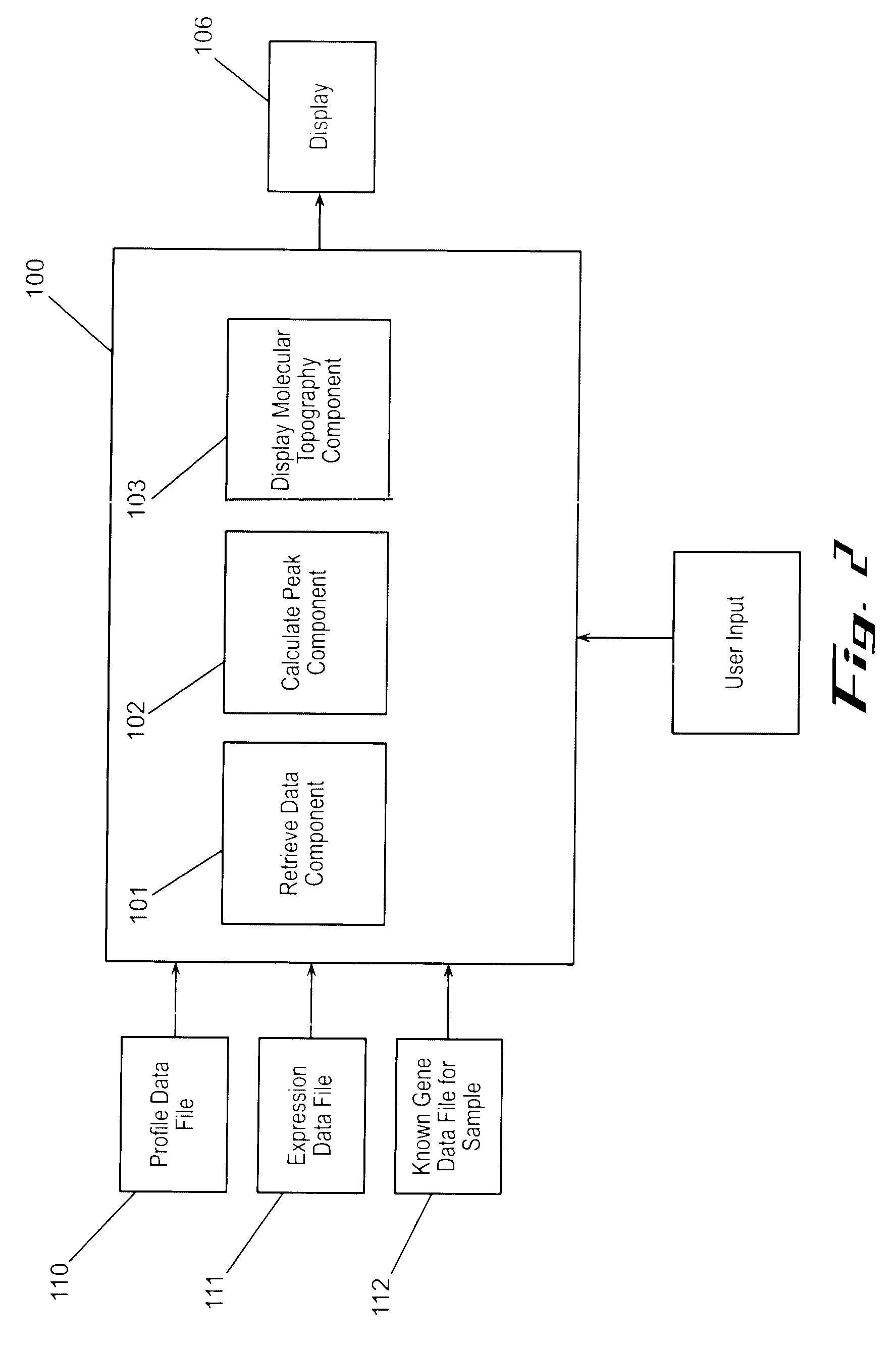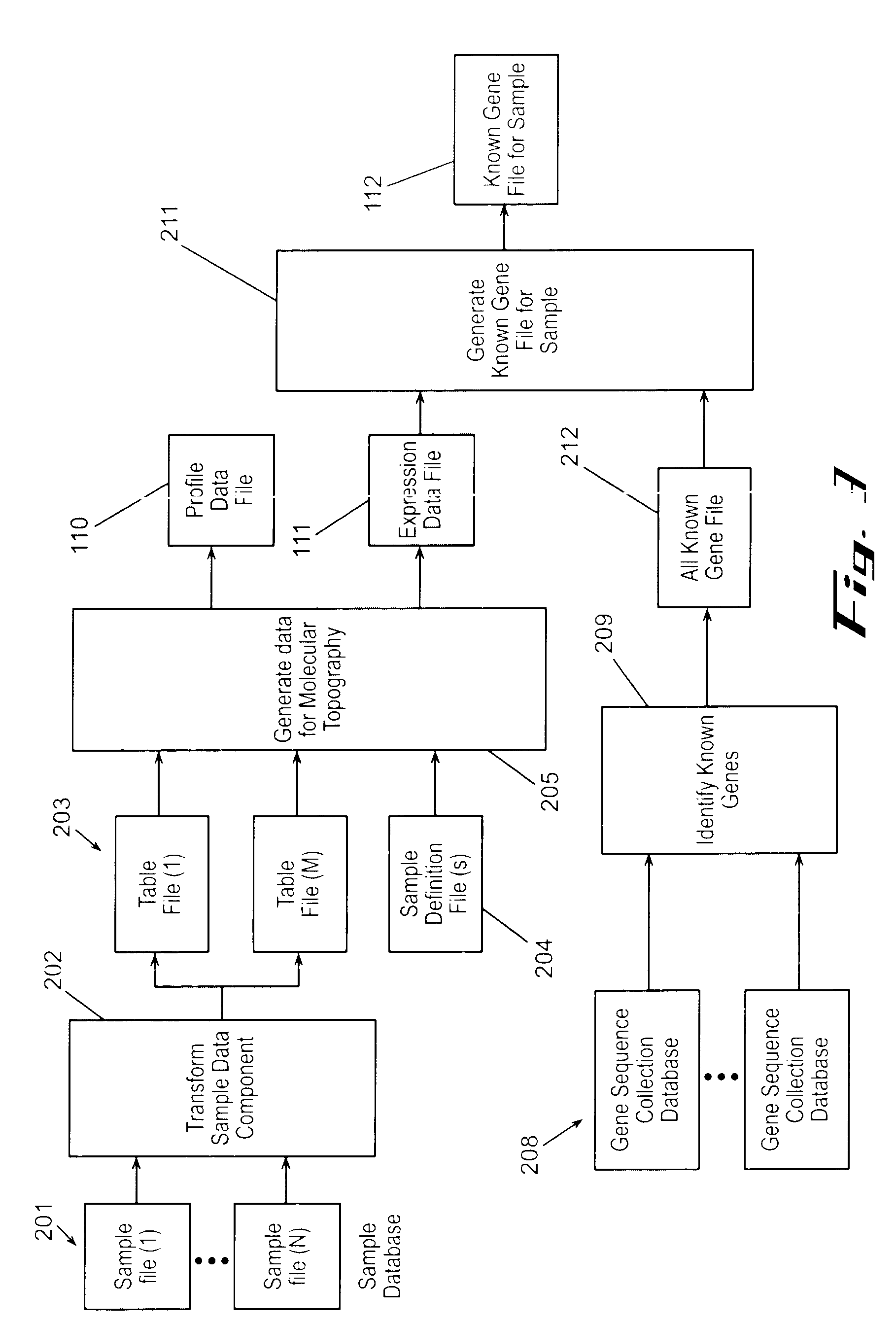Computer methods and systems for displaying information relating to gene expression data
- Summary
- Abstract
- Description
- Claims
- Application Information
AI Technical Summary
Problems solved by technology
Method used
Image
Examples
Embodiment Construction
[0076]The present invention relates to, inter alia, methods and systems for acquiring, identifying, linking, storing, organizing, retrieving, manipulating and analyzing data relating to constituents of biological samples, and to methods and systems for displaying data, the results of manipulation of data and the results of analysis of data relating to constituents of biological samples.
[0077]In another particular aspect, the present invention relates to, inter alia, methods and systems for acquiring, identifying, linking, storing, organizing, retrieving, manipulating and analyzing data relating to gene expression, and to methods and systems for displaying such data, for displaying data relating to gene expression, and results of manipulating and analyzing such data.
[0078]In a preferred aspect, the present invention relates to, inter alia, methods and systems for acquiring, identifying, linking, storing, organizing, retrieving, manipulating and analyzing data relating to DNA or RNA o...
PUM
| Property | Measurement | Unit |
|---|---|---|
| Electric potential / voltage | aaaaa | aaaaa |
| Electric potential / voltage | aaaaa | aaaaa |
| Gene expression profile | aaaaa | aaaaa |
Abstract
Description
Claims
Application Information
 Login to View More
Login to View More - R&D
- Intellectual Property
- Life Sciences
- Materials
- Tech Scout
- Unparalleled Data Quality
- Higher Quality Content
- 60% Fewer Hallucinations
Browse by: Latest US Patents, China's latest patents, Technical Efficacy Thesaurus, Application Domain, Technology Topic, Popular Technical Reports.
© 2025 PatSnap. All rights reserved.Legal|Privacy policy|Modern Slavery Act Transparency Statement|Sitemap|About US| Contact US: help@patsnap.com



